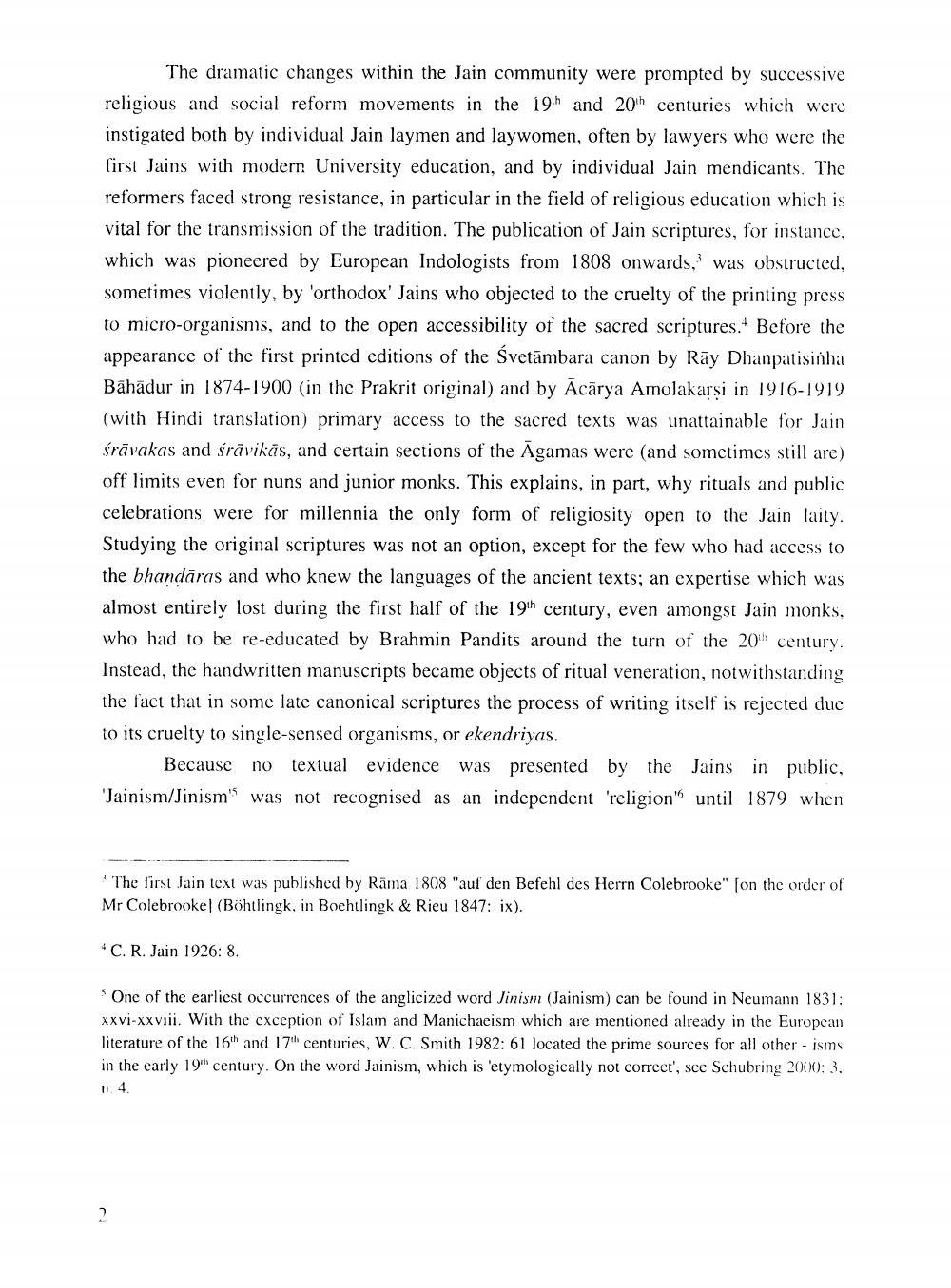________________
The dramatic changes within the Jain community were prompted by successive religious and social reform movements in the 19th and 20th centuries which were instigated both by individual Jain laymen and laywomen, often by lawyers who were the first Jains with modern University education, and by individual Jain mendicants. The reformers faced strong resistance, in particular in the field of religious education which is vital for the transmission of the tradition. The publication of Jain scriptures, for instance, which was pioneered by European Indologists from 1808 onwards, was obstructed, sometimes violently, by 'orthodox' Jains who objected to the cruelty of the printing press to micro-organisms, and to the open accessibility of the sacred scriptures. Before the appearance of the first printed editions of the Svetambara canon by Ray Dhanpalisinha Bahadur in 1874-1900 (in the Prakrit original) and by Acarya Amolakarsi in 1916-1919 (with Hindi translation) primary access to the sacred texts was unattainable for Jain śrāvakas and śrävikäs, and certain sections of the Agamas were (and sometimes still are) off limits even for nuns and junior monks. This explains, in part, why rituals and public celebrations were for millennia the only form of religiosity open to the Jain laity. Studying the original scriptures was not an option, except for the few who had access to the bhandaras and who knew the languages of the ancient texts; an expertise which was almost entirely lost during the first half of the 19th century, even amongst Jain monks, who had to be re-educated by Brahmin Pandits around the turn of the 20th century. Instead, the handwritten manuscripts became objects of ritual veneration, notwithstanding the fact that in some late canonical scriptures the process of writing itself is rejected due to its cruelty to single-sensed organisms, or ekendriyas.
Because no textual evidence was presented by the Jains in public, Jainism/Jinism was not recognised as an independent 'religion" until 1879 when
The first Jain text was published by Rama 1808 "auf den Befehl des Herrn Colebrooke" [on the order of Mr Colebrooke] (Böhtlingk, in Bochtlingk & Rieu 1847: ix).
C. R. Jain 1926: 8.
* One of the earliest occurrences of the anglicized word Jinism (Jainism) can be found in Neumann 1831: xxvi-xxviii. With the exception of Islam and Manichaeism which are mentioned already in the European literature of the 16th and 17th centuries, W. C. Smith 1982: 61 located the prime sources for all other - isms in the early 19th century. On the word Jainism, which is 'etymologically not correct', see Schubring 2000: 3.
n. 4.
2




